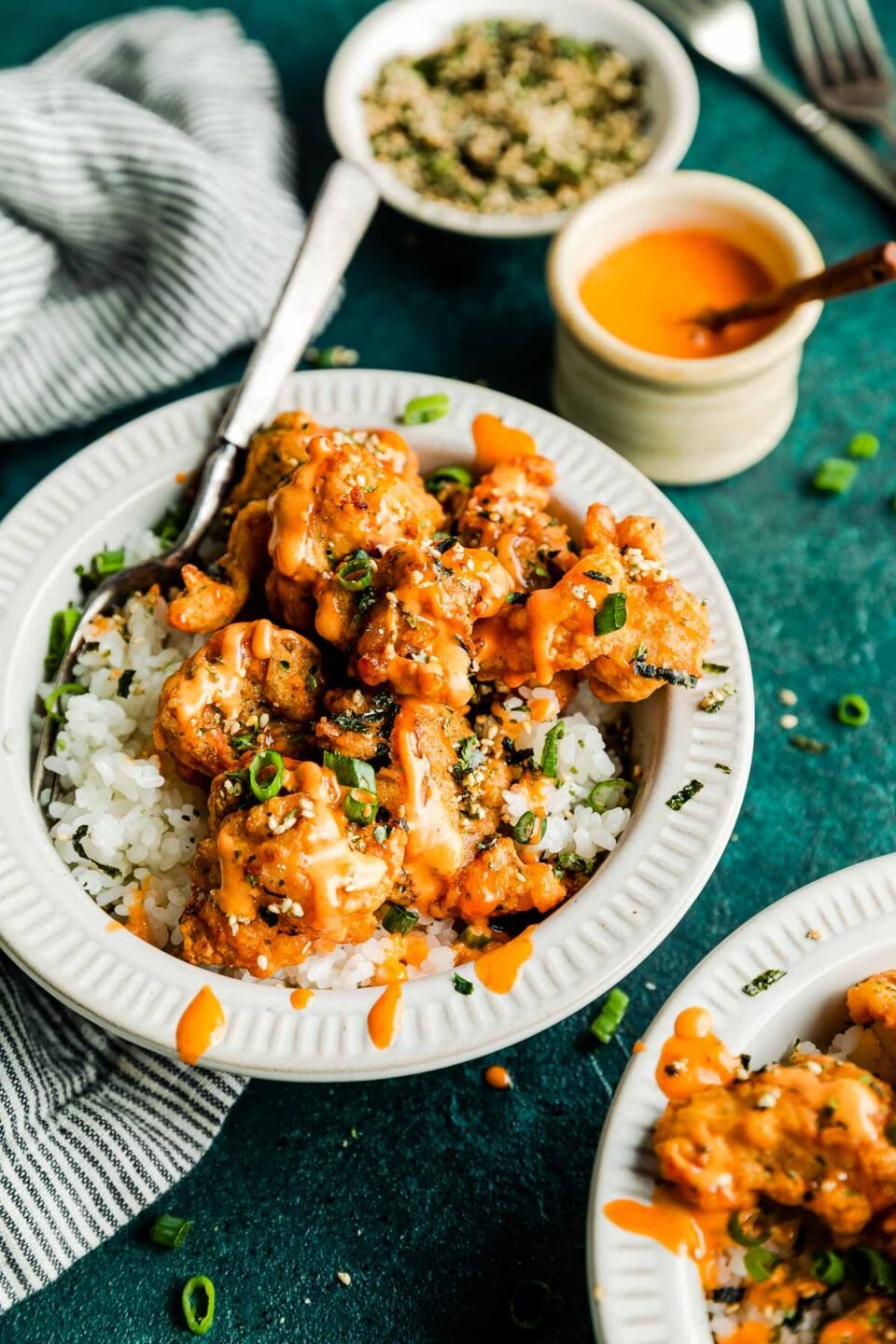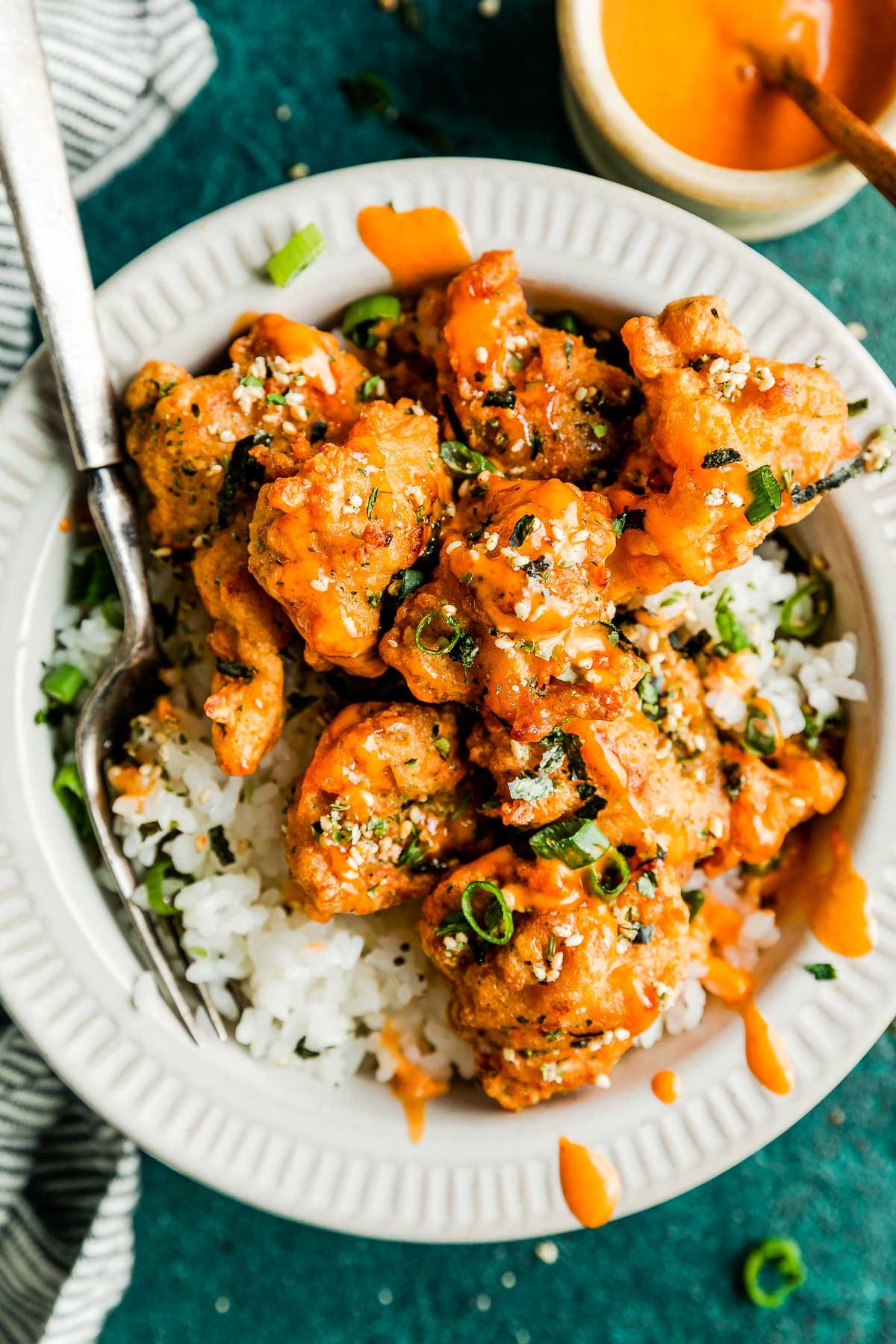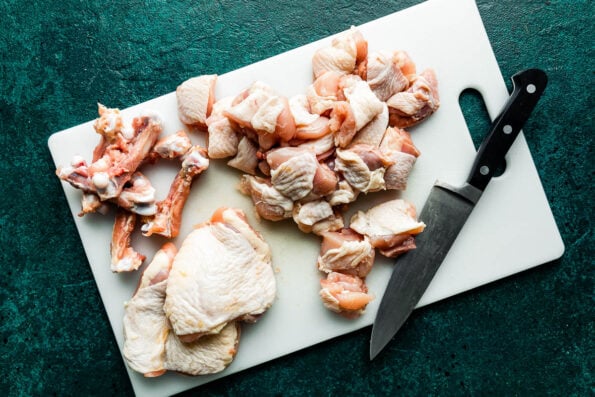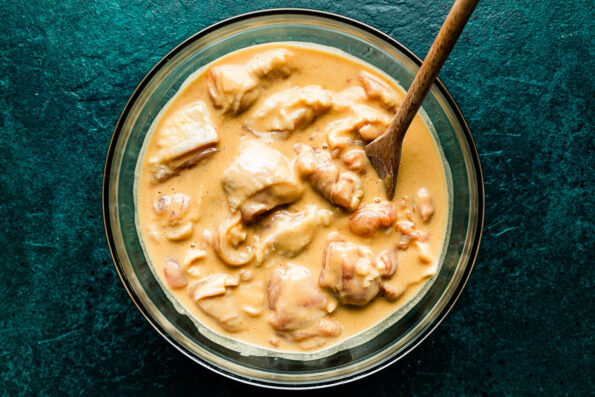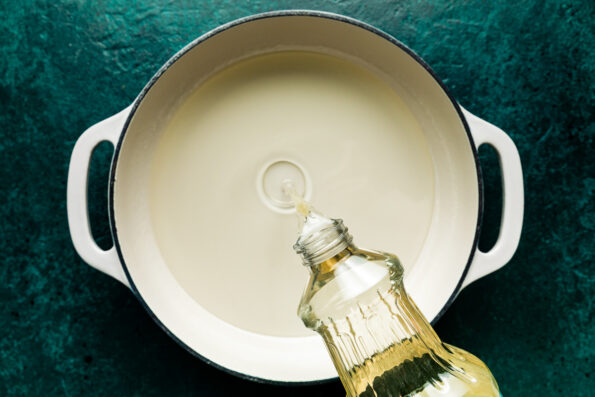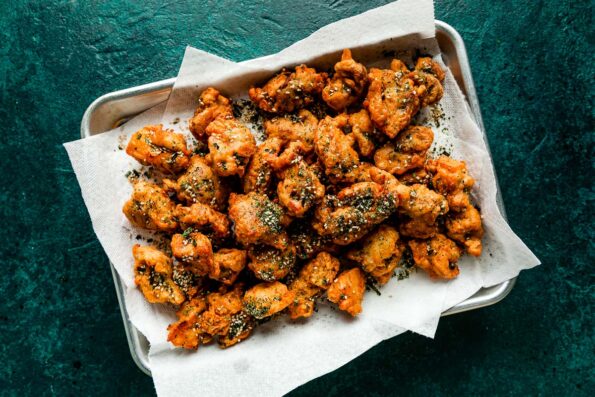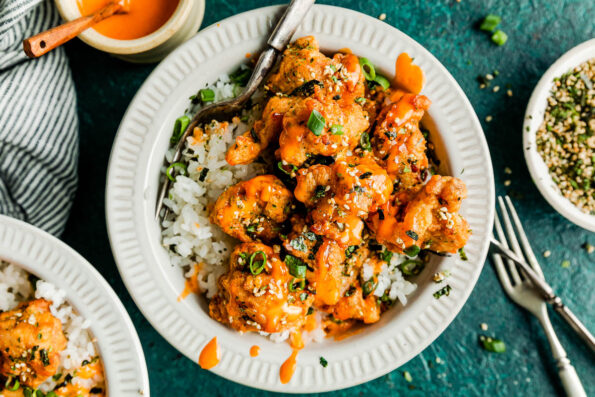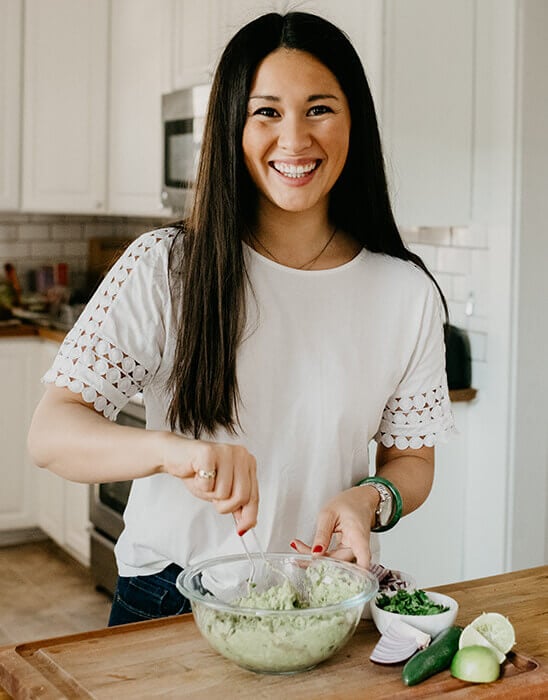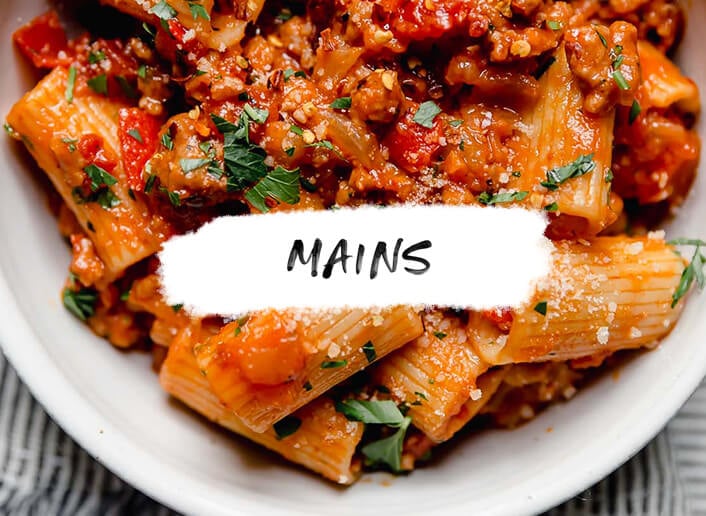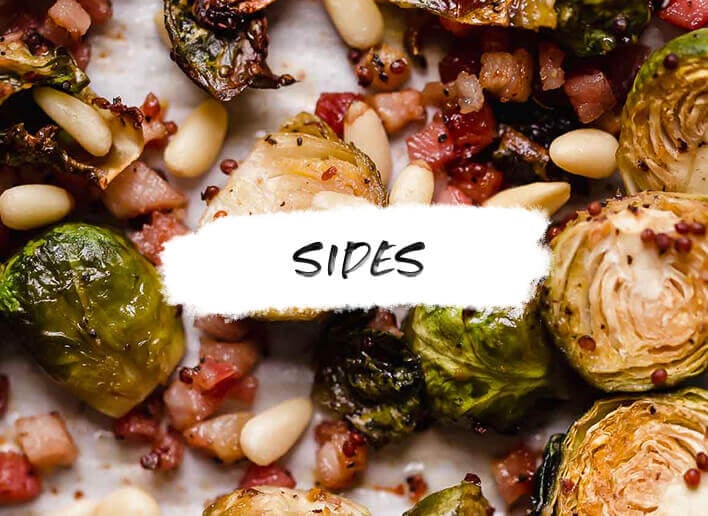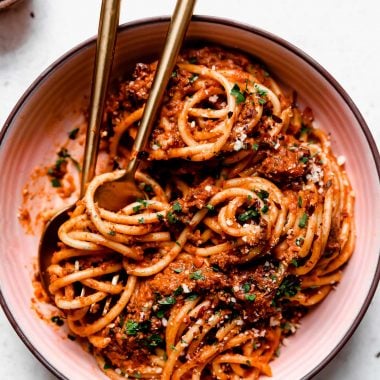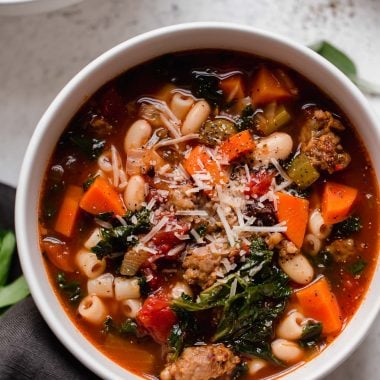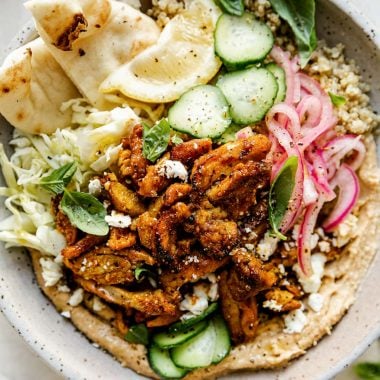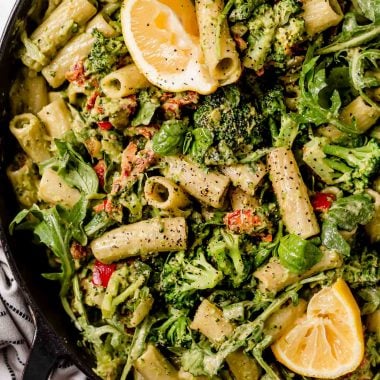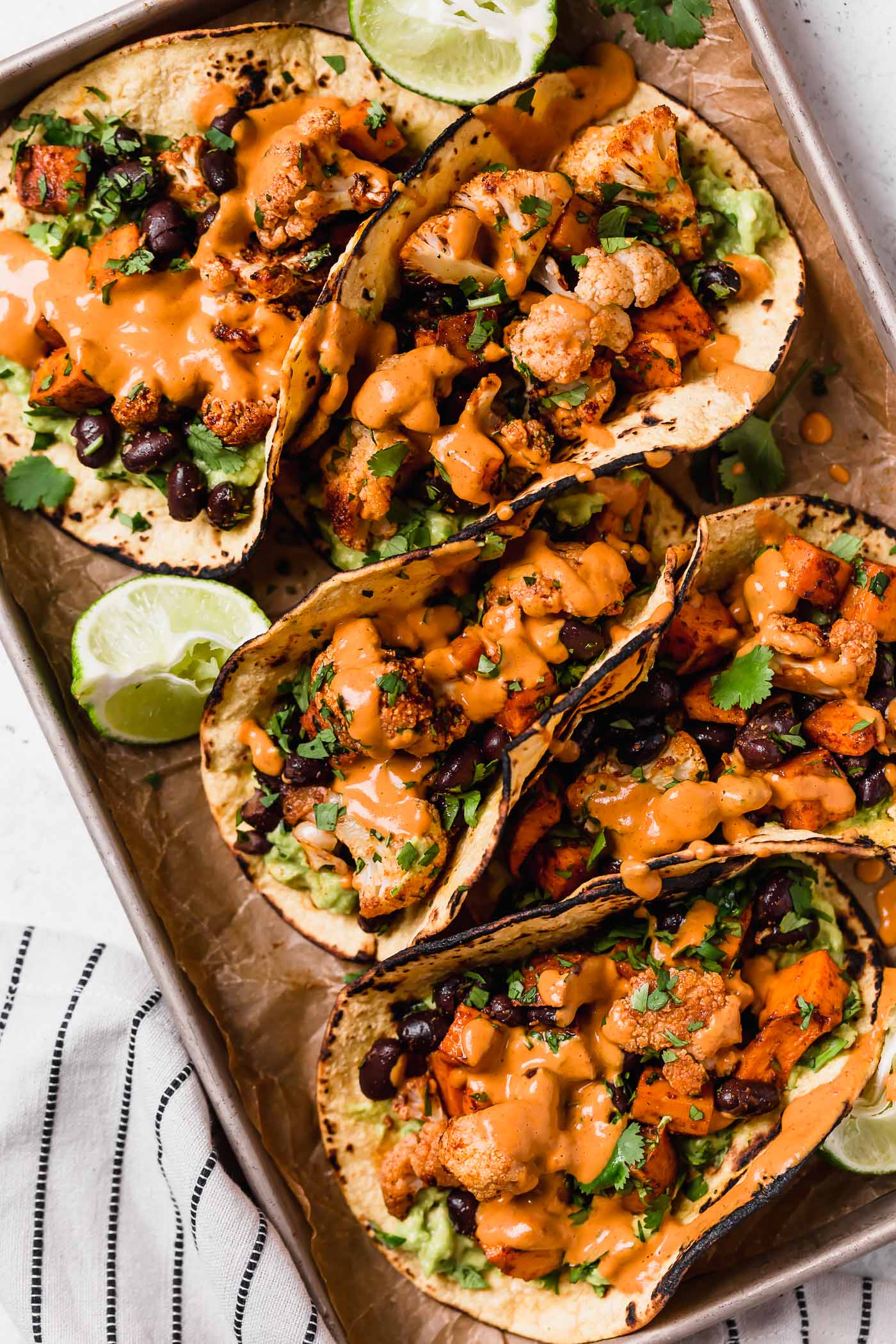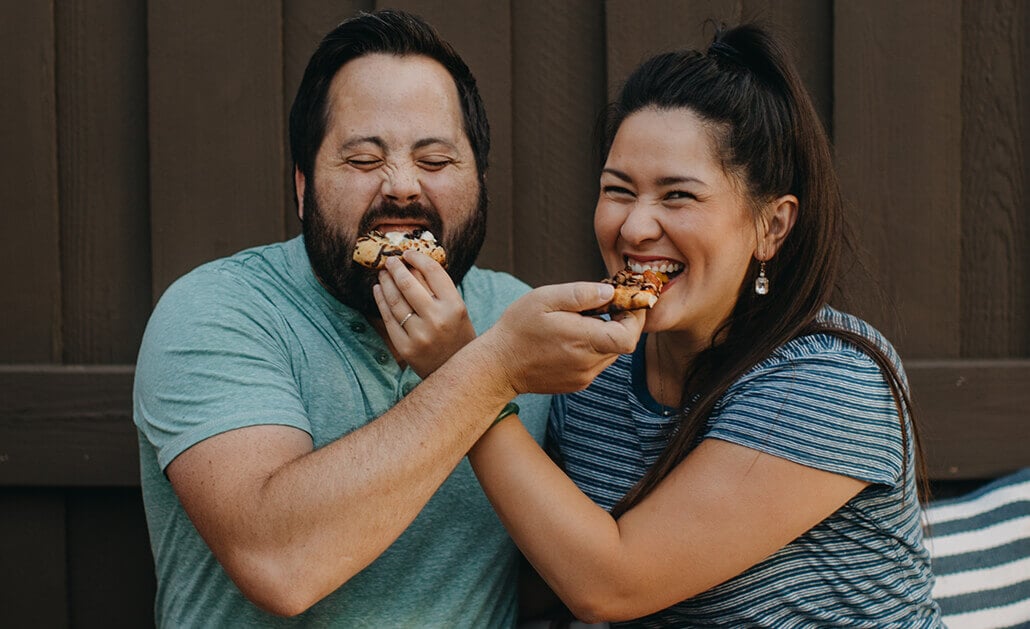Local-Style Fried Chicken Is Easy to Make in Hawaii Or on the Mainland with this Family Recipe! 🌺
Mochiko chicken is Hawaii’s delicious contribution to the diverse, global fried chicken scene. Just like shoyu chicken & Spam musubi, mochiko chicken reflects the heavy Japanese influence in Hawaii’s local food culture. The star of the dish is mochiko flour – a glutinous, sweet rice flour that yields a light & crispy texture that’s more like tempura than crunchy American fried chicken. It’s SO good!
This mochiko chicken recipe comes straight to us from Mom’s kitchen. It’s very traditional in style & comes together with just 10 staple ingredients. Simply marinate the chicken overnight in a savory mochiko batter, then fry the bite-sized pieces on your stovetop. It’s so easy & mostly hands-off!
If you’ve traveled to Hawaii, you may be familiar with Chef Sheldon Simeon’s famous mochiko chicken at Tin Roof in Kahului, Maui. In our experience, his version is a hybrid of local-style mochiko chicken & extra crispy Korean fried chicken – a fantastic modern-day example of how the local Hawaii food scene is a living, breathing thing taking bits & pieces from other cultures to create something uniquely delicious!
Since Tin Roof mochiko chicken is one of our favorite bites on Maui, we wanted to finish Mom’s recipe with a bit of inspiration form the restaurant. A drizzle of gochujang aioli adds a creamy spice to the mochiko chicken that’s perfect served plate lunch-style alongside rice, mac salad, or noodles – just like how Chef Sheldon does it. An epic local-style meal, right at home!
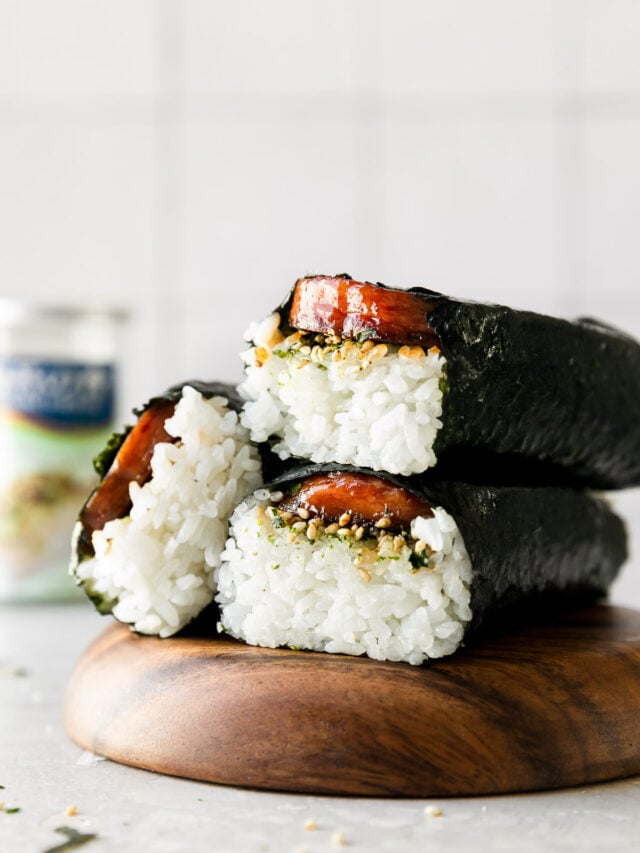
FREE Email Series: Local-Style Hawai’i Favorites
16 of my family’s recipes delivered straight to your inbox for a true taste of aloha at home! 🌺🤙🏼
Mochiko Chicken Recipe Highlights
You’re going to love Mom’s recipe for mochiko chicken. It’s …
THE PERFECT TEXTURE. Mochiko flour is the star ingredient in this recipe! This Japanese sweet rice flour gives the fried chicken its signature texture: light & crispy yet uniquely chewy & bouncy all at once. It’s seriously craveable!
EASY TO MAKE AT HOME. This mochiko chicken recipe comes together with just 10 simple ingredients & most of the prep work is hands-off marinating time. Mochiko fried chicken is easy to make, whether you’re on the islands or the mainland!
LOCAL-STYLE COMFORT. One crispy, chewy bite of mochiko chicken instantly transports us to Hawaii, where it’s an iconic dish in the local food scene. For the ultimate experience, enjoy it plate lunch-style with a scoop of Mom’s mac salad & a drizzle of gochujang aioli a la Tin Roof!
A taste of Hawai’i at home! 🤙🏼 ♡ Read on to learn more about Mochiko Chicken, or jump straight to the recipe & get cooking!
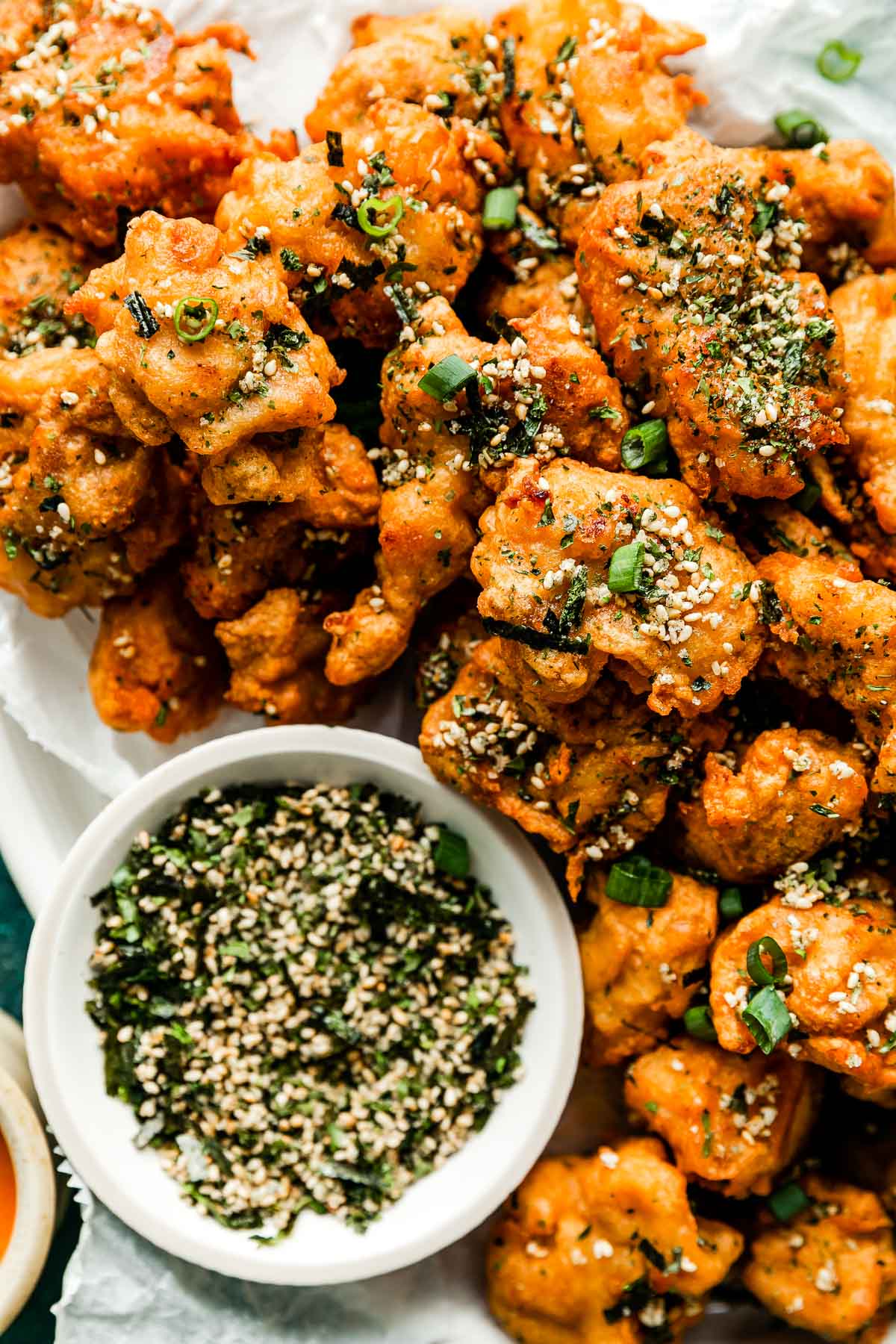
What is Mochiko Chicken?
It’s important to understand that Hawaii is a melting pot of people, cultures, & traditions from all around the Pacific Rim. While non-locals or mainlanders might envision gorgeous seafood & tropical flavors in Hawaii, there’s so much more to the local Hawaii food scene than that! Food in Hawaii is as diverse & culturally-rich as its people. Comfort foods like beef stew, noodles, & fried chicken are a big part of the food scene!
So what is mochiko chicken? ⇢ Mochiko fried chicken is essentially Hawaii’s spin-off of Japanese-style karaage. The chicken is battered with mochiko flour, a glutinous sweet rice flour, which makes the resulting fried chicken light & crispy yet uniquely chewy, kind of like a classic tempura. It’s the BEST, especially served plate lunch-style with mac salad & some rice. 😋
If you’ve traveled to Maui, you might be familiar with Chef Sheldon Simeon’s famous recipe at Tin Roof (the Kahului restaurant that’s always our first stop from the airport!). Chef Sheldon’s extra-crunchy version marries local-style mochiko chicken with breaded Korean fried chicken to create the best of both worlds. It’s not necessarily traditional but it is super awesome. Plus, drawing inspiration from other cultures to create something uniquely delicious is exactly what local Hawaii cuisine is all about! 🤙🏼🌺
This particular mochiko chicken recipe comes from my mom, who is a traditionalist through & through. Mom grew up in Honolulu with local-style mochiko chicken that was puffy, crispy, & bouncy, not super crunchy. That’s how we always enjoyed it at home, so that’s the version we’re sharing with you today.
Is mochiko chicken gluten-free? ⇢ Not quite, but it’s easy to adapt! The “glutinous” component of mochiko flour means it’s extra sticky & stretchy, not full of gluten. The rice flour itself is naturally GF, so if you’re looking for a gluten-free mochiko chicken recipe, all you have to do is swap shoyu with your favorite GF substitute, like tamari or coconut aminos – easy!
Key Ingredients
You only need 10 simple ingredients to make mochiko chicken at home, & most of them are probably already in your pantry!
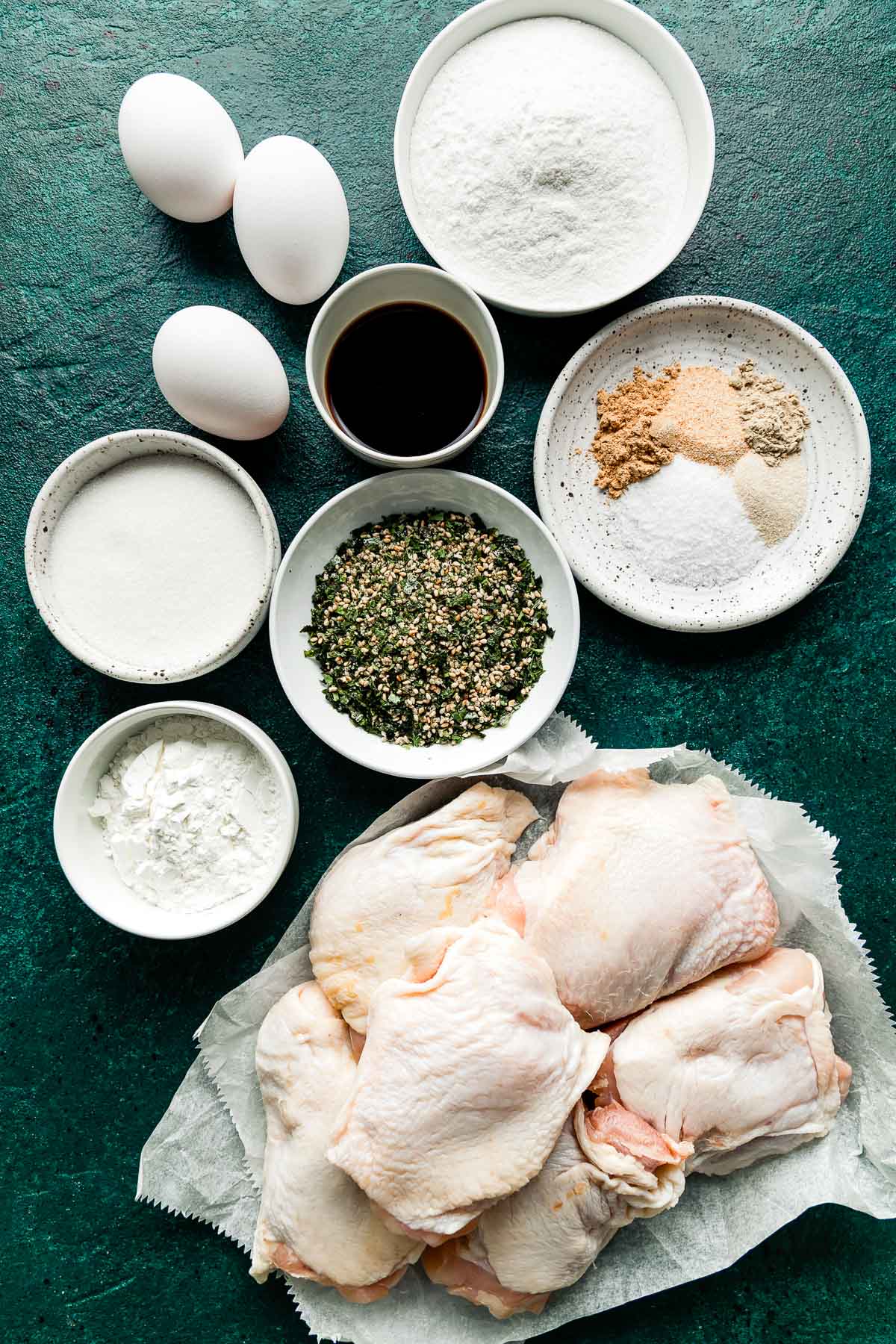
You need…
- Chicken – Our family prefers to use deboned chicken thighs with the skin on (we love the extra texture it adds!). If it’s easiest for you, feel free to use boneless skinless chicken thighs. We definitely recommend sticking to chicken thighs though – they’re extra rich & juicy! Cut the meat into bite-size pieces for quick & easy frying.
- Mochiko flour – This glutinous Japanese sweet rice flour is the star of the batter & gives mochiko chicken its namesake! There’s simply no replacement for it. Learn more in the Ingredient Spotlight, below!
- Seasoning – A bit of ground ginger, garlic powder, onion powder, white pepper, sugar & salt make the mochiko chicken batter super flavorful.
- Cornstarch – Whisking cornstarch or potato starch into the mochiko chicken batter keeps it super light, ensuring the fried chicken gets perfectly crispy.
- Egg – Eggs give the batter body & help it bind to the chicken well for an even coating.
- Shoyu – Another example of Japanese influence in local Hawaiian cuisine! This mellow, Japanese-style soy sauce is ubiquitous in Hawaii. Our personal favorite is Aloha Shoyu, which is brewed in Hawaii & has delicious, balanced flavor. Feel free to swap shoyu for whatever soy sauce is most accessible to you.
- Frying oil – The best frying oils are neutral, high-smoke point oils like vegetable oil.
- Furikake – This Japanese rice seasoning is a blend of sesame seeds, nori, salt & sugar. It’s a total umami bomb! We love finishing fried mochiko chicken with a generous dusting of furikake for extra flavor & texture.
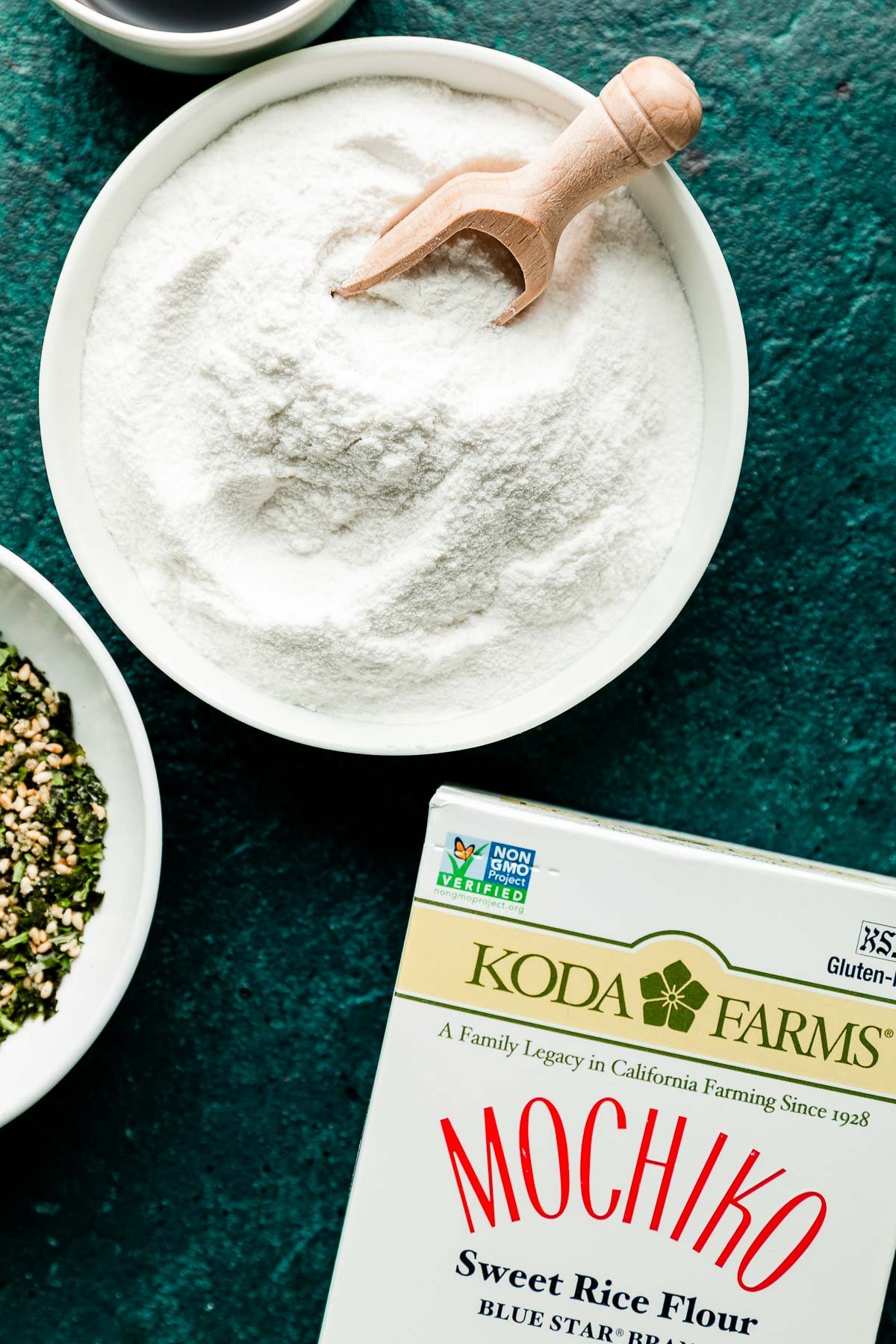
What is Mochiko Flour?
Mochiko flour is a variety of rice flour made from glutinous, short-grain sweet rice. To clear a few things up – “glutinous” means the rice is sticky (not containing gluten!) & its sweetness is very subtle. The flour itself is very powdery, fine, & easy to work with.
The best part about using mochiko flour is its uniquely stretchy, slightly chewy texture. If you’ve ever had mochi before, you’re already familiar with mochiko flour! Mochiko flour gives the fried chicken a unique bounciness when you bite into it (the texture is very different from the crunchy fried chicken that’s most popular here on the mainland). There is simply no substitute for mochiko flour in mochiko chicken – it’s what makes this dish so amazing!
Where to buy mochiko flour? ⇢ You can typically find mochiko flour at most Asian grocery stores or order it online. Koda Farms “Blue Star” Mochiko is the variety most commonly used in Hawaii.
Shop This Post
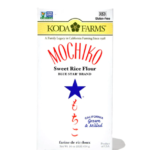 Buy Now →
Buy Now → 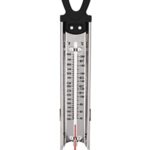 Buy Now →
Buy Now → 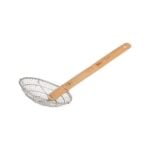 Buy Now →
Buy Now → 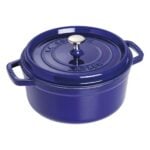 Buy Now →
Buy Now → 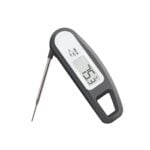 Buy Now →
Buy Now → 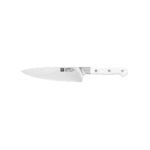 Buy Now →
Buy Now → 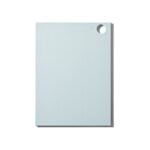 Buy Now →
Buy Now → 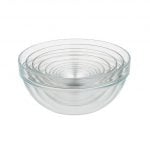 Buy Now →
Buy Now → 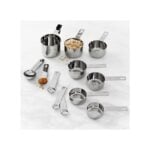
Stainless Steel Measuring Cups & Spoons
Buy Now →How to Make Mochiko Chicken
This mochiko chicken recipe is a 2-day process, so be sure to plan ahead. Most of the work is hands-off, so there’s no need to be intimidated! Start by marinating bite-sized chicken pieces in a homemade mochiko batter, letting them soak up all the flavor overnight. The next day, simply deep fry the chicken on the stovetop & dig in. Just like any fried chicken, we encourage you not to feel too intimidated by the frying process – once you get the hang of it, it’s pretty simple!
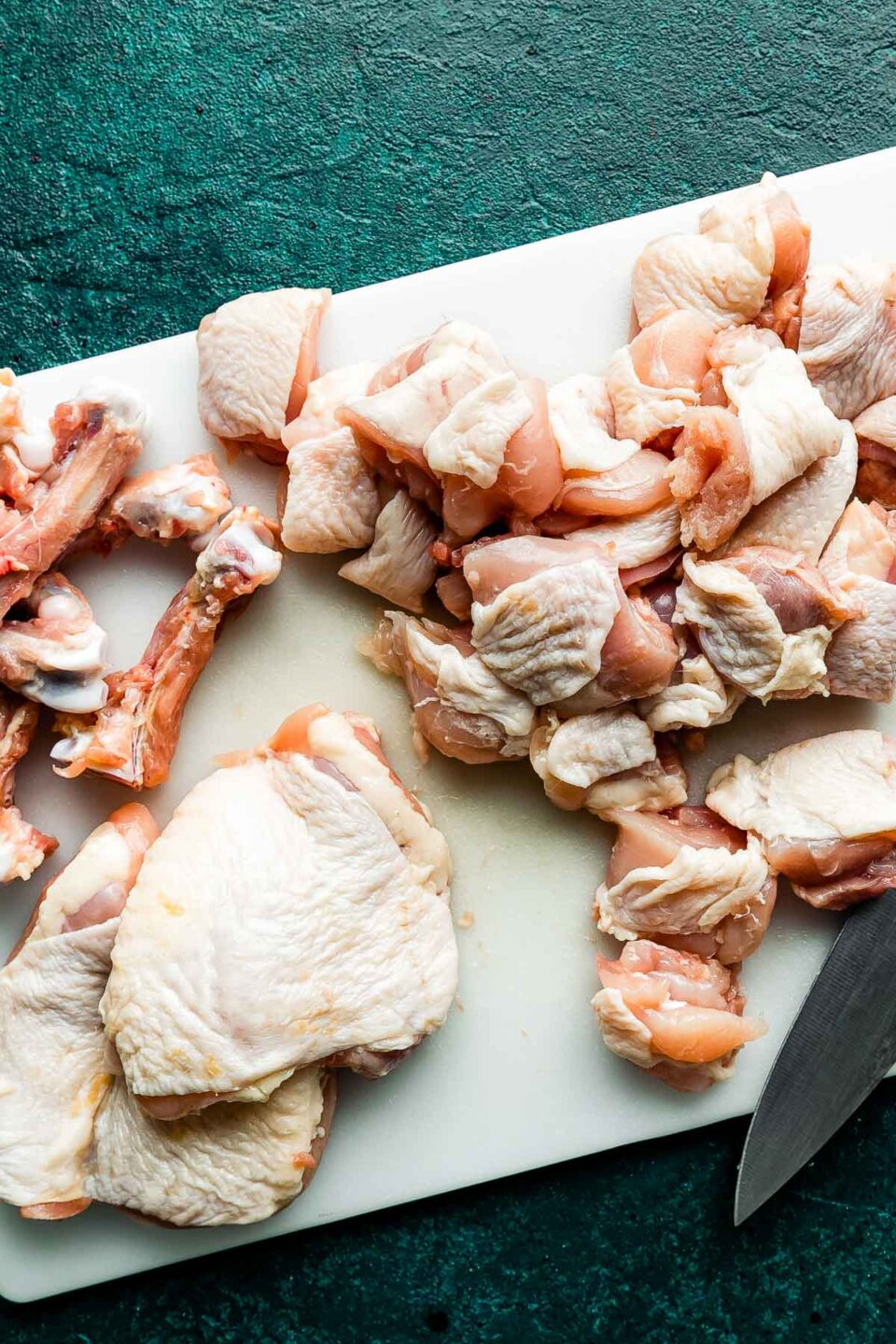
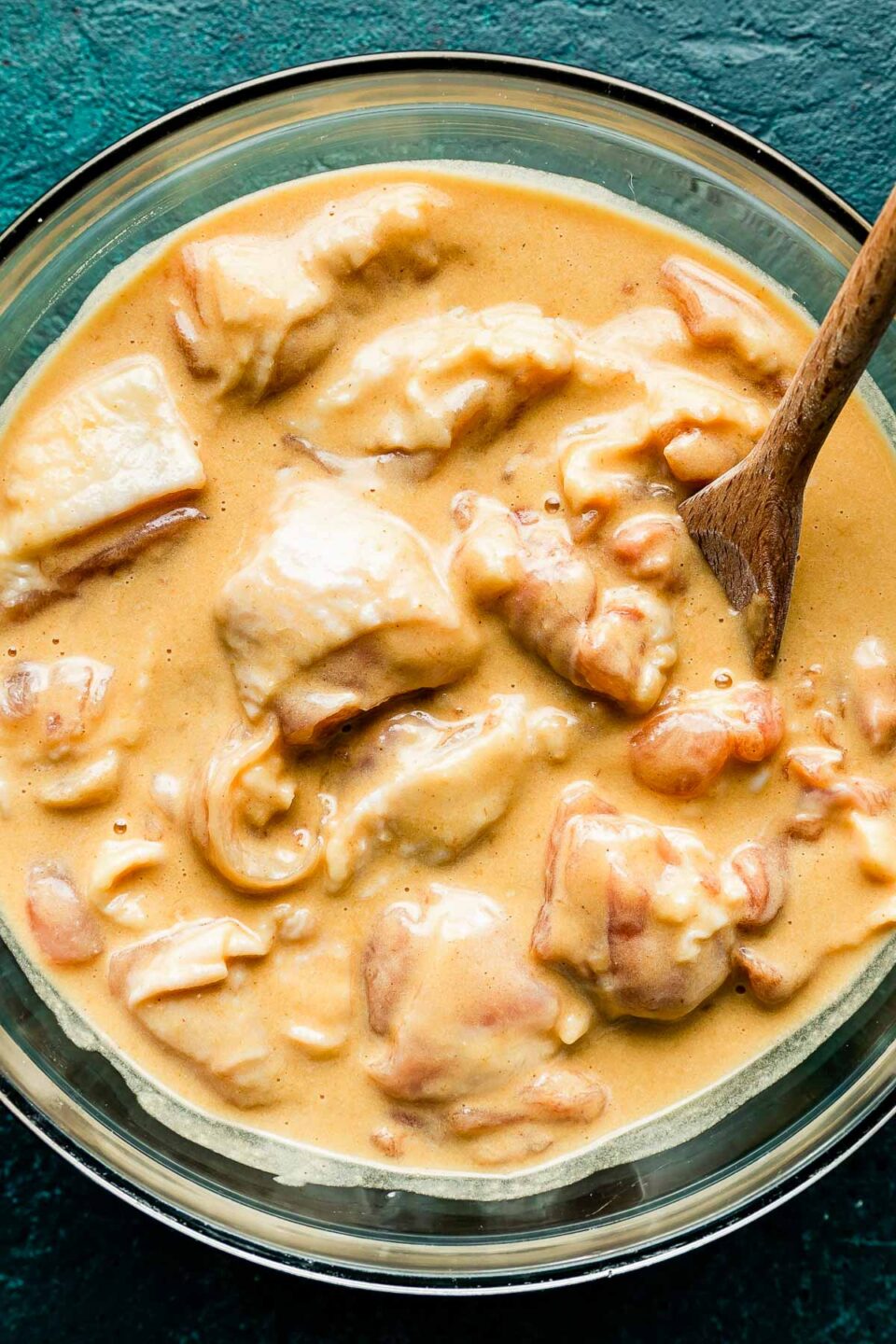
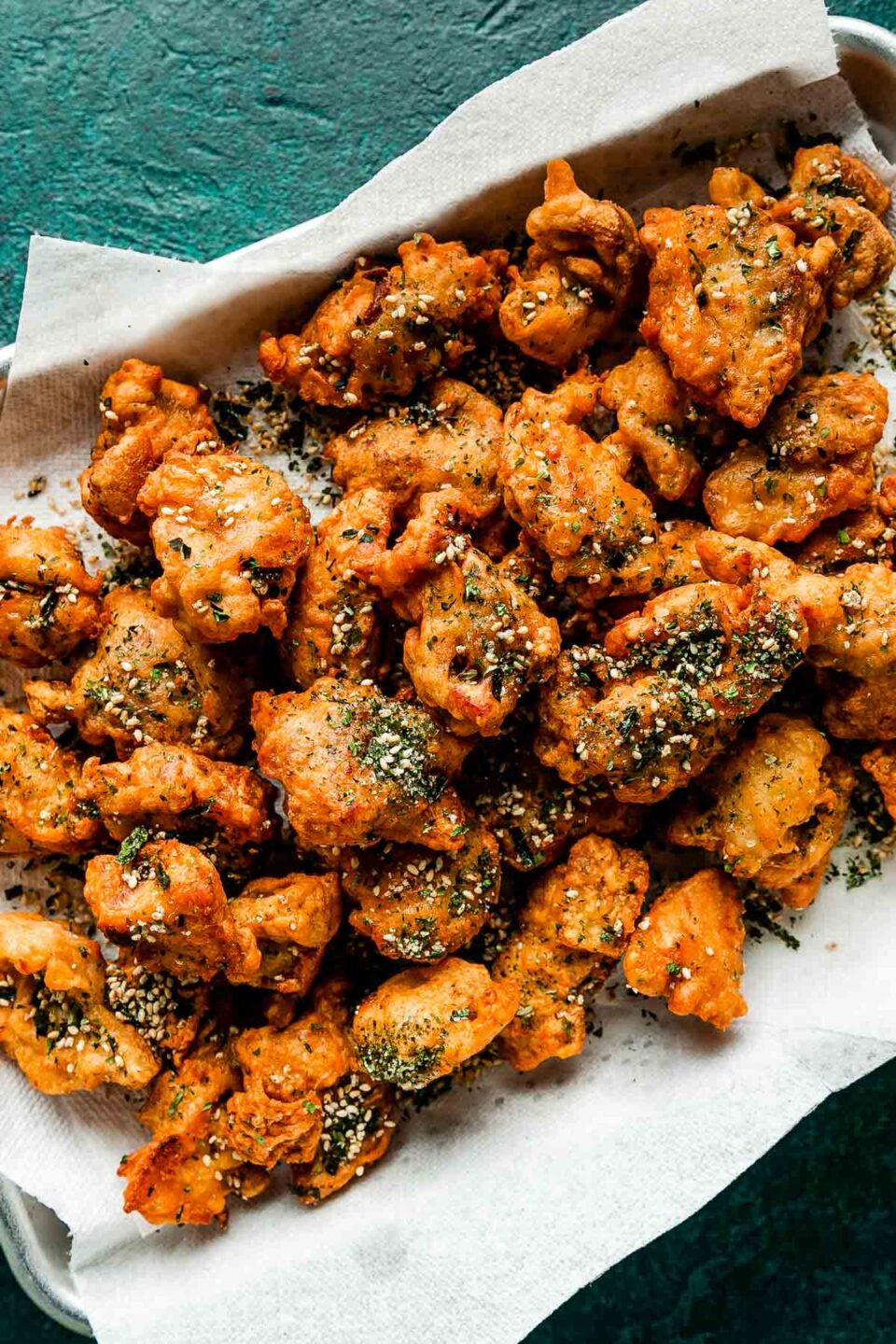
Prepare the chicken thighs. If you opted for bone-in, skin-on chicken thighs then you’ll need to de-bone the chicken before frying. This video can show you how. Leave the skin on though! Why? ⇢ We love the extra crispy texture & rich flavor that comes from the chicken skin – it makes the fried mochiko chicken that much better! Finish by patting the chicken dry & cutting it into pieces.
Make the mochiko chicken batter. Whisk the dry ingredients together in a medium bowl first – the mochiko flour, cornstarch, & seasoning – then add the eggs & shoyu, mixing until smooth. Tip! ⇢ This mixture will look more like a batter than a “marinade” you might typically soak chicken in. It should be thick, smooth, & kinda stretchy.
Marinate the chicken. Coat the chicken in the batter & let the bowl rest in the fridge for at least 12 hours or up to 3 days. We like to let things soak overnight. Why? ⇢ A long marinate helps the meat soak up as much of those savory flavors as possible. Plus, it makes the chicken super juicy & tender!
Fry! Heat about an inch of oil in a heavy-bottomed pot like a Dutch oven. While you wait, take the chicken out of the fridge (room temp chicken is easier to fry!). Add the battered mochiko chicken to the hot oil & turn it every few minutes so it browns evenly. Be sure to work in batches so you don’t overcrowd the pot. Essential equipment! ⇢ A candy thermometer easily helps gauge the temperature of the oil (it should reach about 350-375 degrees Fahrenheit for frying). A spider strainer allows you to safely remove the chicken from the hot oil.
Season & repeat! Let the mochiko fried chicken drain on a paper towel-lined plate or a baking sheet fitted with a wire rack & sprinkle it with lots of furikake while it’s still hot. Repeat until all the battered chicken is cooked.
Step-by-Step Video
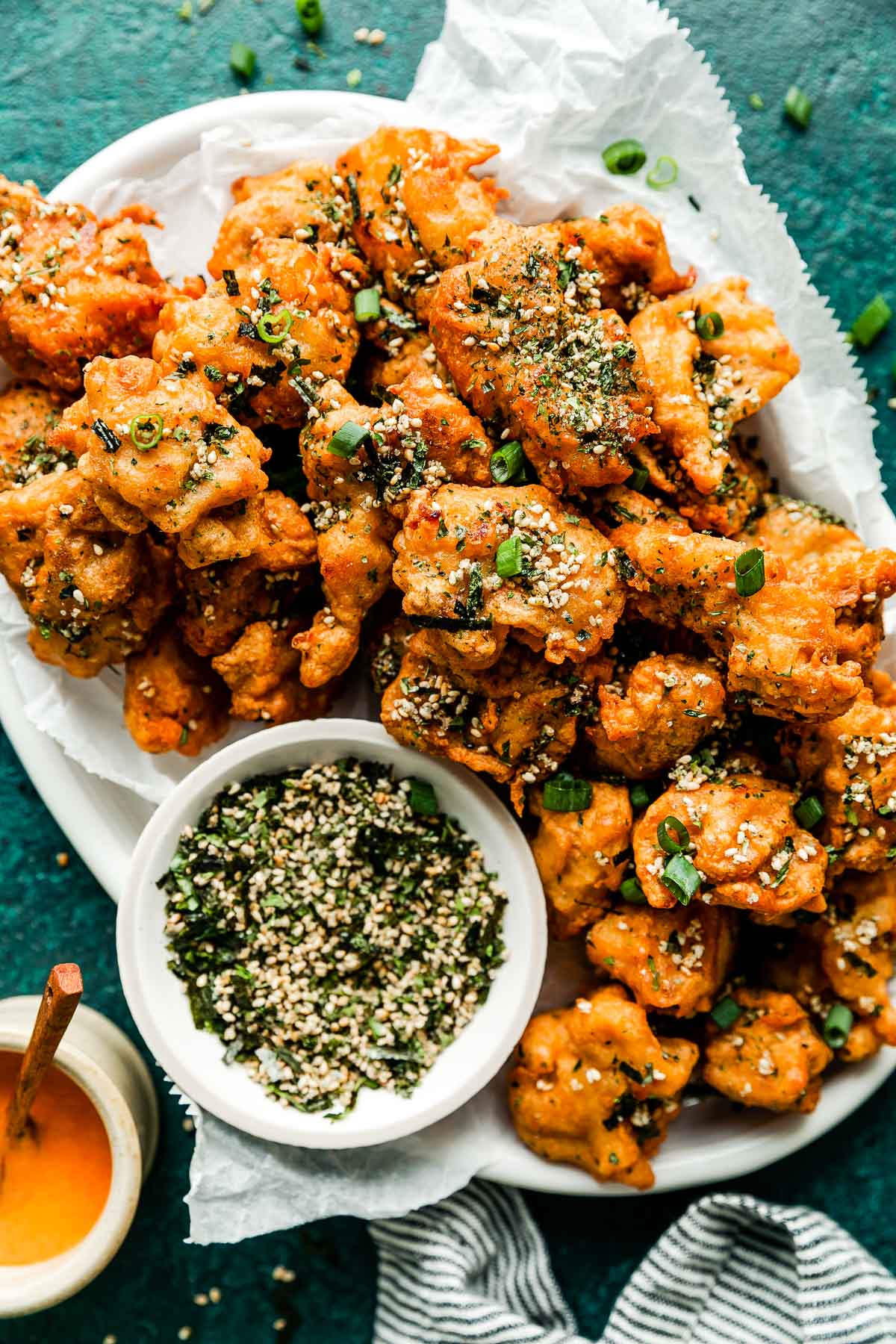
Alternate Cooking Method: Tin Roof Mochiko Chicken
Chef Sheldon’s Simeon’s mochiko chicken recipe takes one extra step! He dredges the battered chicken in flour to create an extra-crunchy crust reminiscent of Korean fried chicken. It’s a simple little something special that helped put Tin Roof on the map! If you love a little extra crunchiness, feel free to give it a try. All you have to do is dredge the battered mochiko chicken in a mixture of flour & cornstarch before frying. Check the Recipe Notes, below, for more guidance!
What to Serve with Mochiko Chicken
After Spam musubi or a shoyu ahi tuna poke bowl, mochiko chicken is our absolute favorite thing to eat in Hawaii.
In Hawaii, mochiko chicken is often enjoyed plate-lunch style with mac salad or noodles. At home, we like to eat it over rice with a quick stir-fried veggie like cabbage or bok choy. It’s pretty perfect with anything!
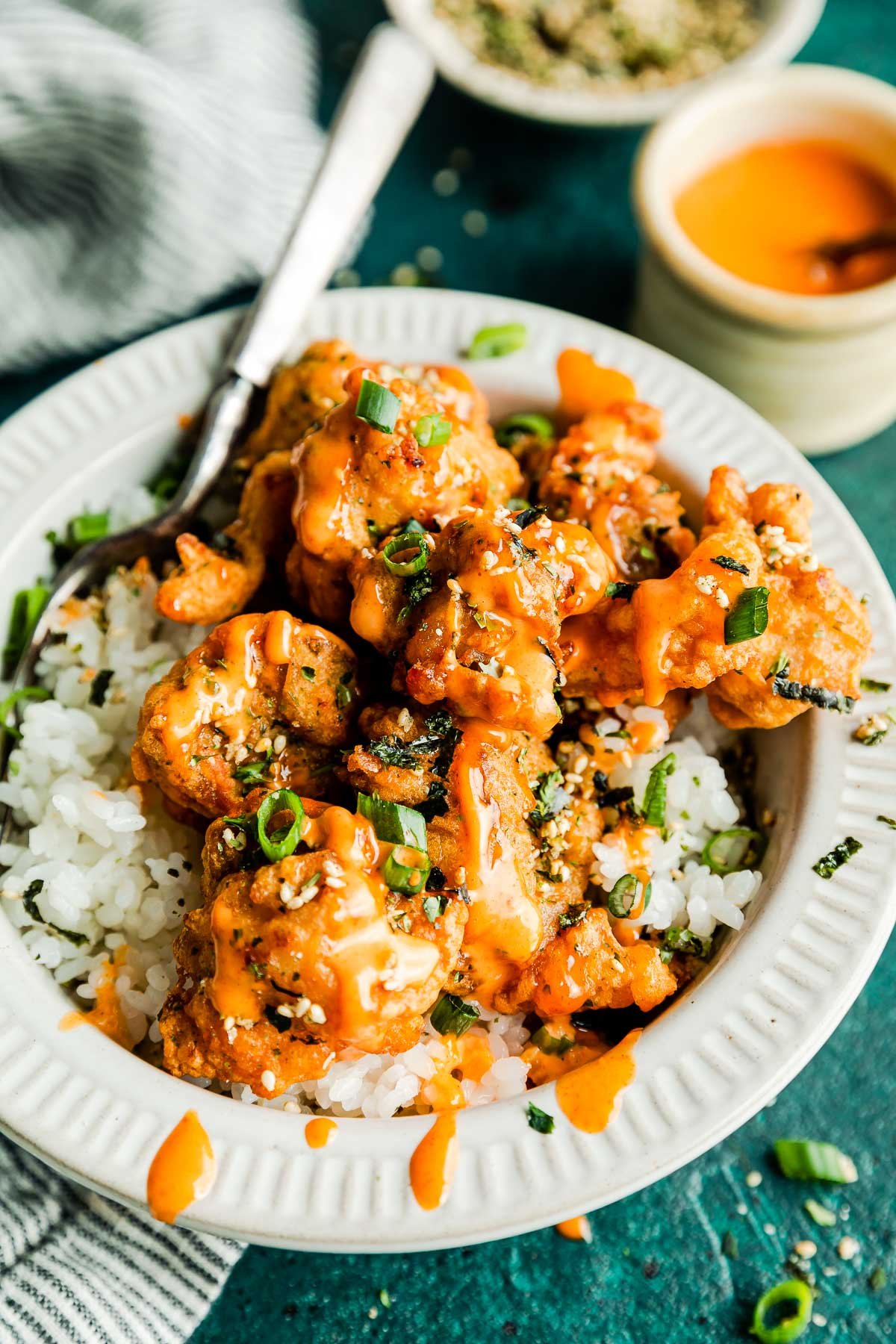
Gochujang Aioli – For Dipping & Drizzling!
One of my favorite things about Tin Roof mochiko fried chicken is that it’s served with a drizzle of spicy aioli for a little extra kick! We took inspiration from Chef Sheldon & made a creamy gochujang aioli for the mochiko chicken – it’s great for drizzling & dipping! To make it, simply mix mayonnaise with a little garlic, gochujang, & pure maple syrup – easy!
Storage & Reheating
Like most fried chicken, mochiko chicken is best enjoyed hot & crispy – so dig right in! Once you start, it’s pretty easy to finish the whole batch. 😋
If you have any leftovers, it’s best to reheat them in the oven or an air fryer. These methods help bring the puffy, crispy mochiko fried chicken texture back to life!
- To reheat mochiko chicken in the oven. ⇢ Bake at 425 degrees for 3-4 minutes per side.
- To reheat mochiko chicken in an air fryer. ⇢ Air fry at 375 degrees for 2 minutes per side.
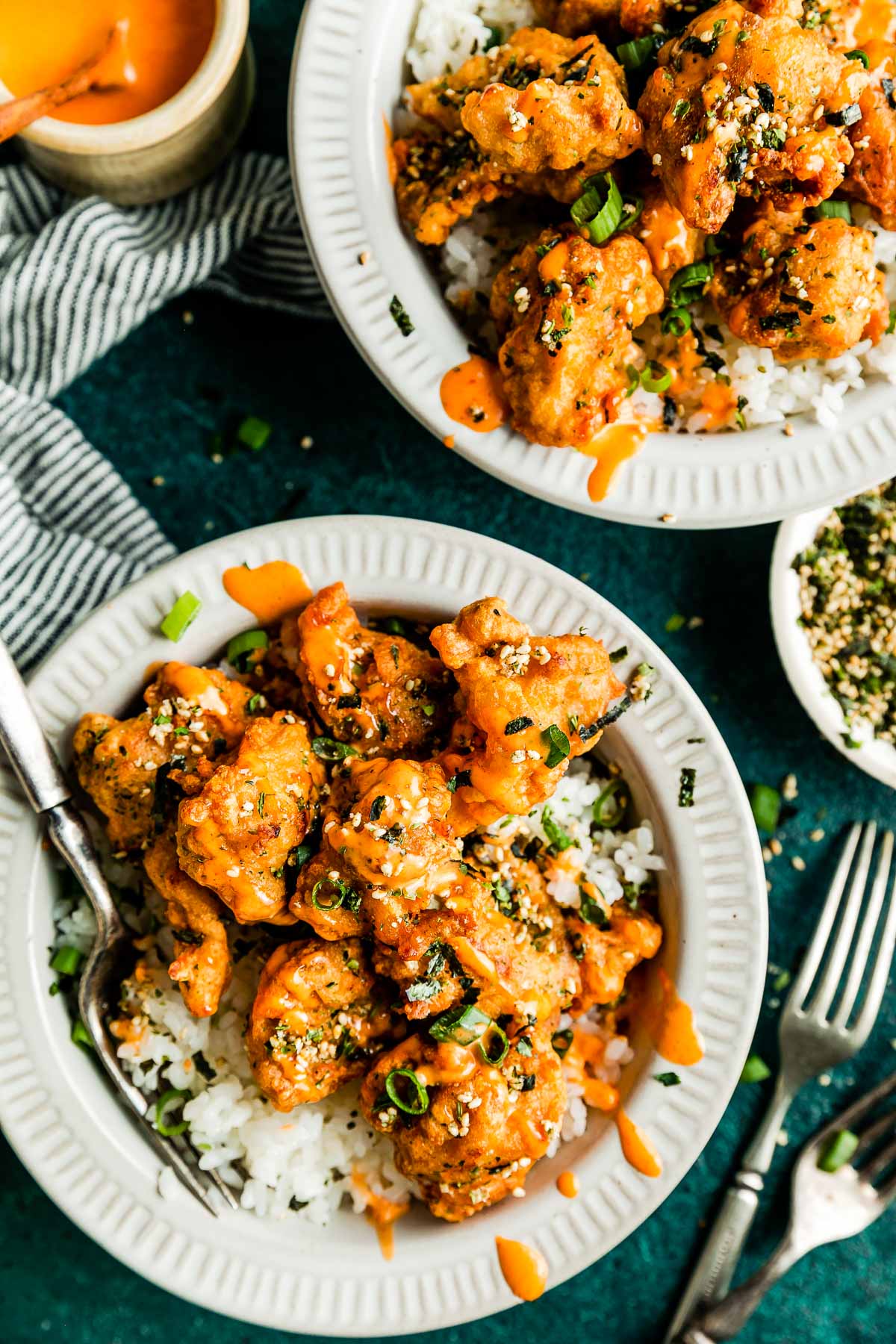
I can’t wait for you to try this local-style Mochiko Chicken recipe! It’s a true taste of what Hawaii is all about & I never get tired of eating it. If mochiko chicken is new to you, this family recipe is a great place to fall in love. 🥰
If you give it a try, be sure to let us know! Leave a comment with a star rating below. You can also snap a photo & tag @playswellwithbutter on Instagram. We LOVE seeing your PWWB creations! ♡ Happy cooking!
More Recipes Like This:
Hawaiian Recipes & Local Favorites
- Best-Ever Kālua Pig (Hawaiian-Style Pulled Pork!)
- Ahi Tuna Poke Bowls
- Best-Ever Spam Musubi
- Hawaiian Shoyu Chicken
- Mom’s Hawaiian Mac Salad (25-Minute Macaroni Salad)
- Grandpa Clarence’s Hawaiian Beef Stew
- Hawaii-Style Kalbi (Grilled Korean Beef Short Ribs)
- Mom’s Chow Fun (Hawaiian-Style Pork Chow Fun)
- Grilled Huli Huli Chicken


Light & Crispy Mochiko Chicken (Hawaii-Style Fried Chicken Thighs)
- Prep Time: 30 minutes
- Cook Time: 20 minutes
- Total Time: 50 minutes
- Yield: serves 4-6 1x
- Category: Main Dishes, Chicken Recipes
- Method: Stovetop, Fried
- Cuisine: Hawaiian
Description
Meet mochiko chicken, Hawaii’s delicious contribution to the diverse, global fried chicken scene! This light, crispy, & golden fried chicken is a popular pupu & plate lunch staple in Hawai’i, & it’s one of my all-time favorite things to eat.
If mochiko chicken is new-to-you, you’re in for such a treat! A spin-off of Japanese-style karaage, this style of chicken is battered with mochiko flour, a glutinous sweet rice flour, which makes the resulting fried chicken light & crispy yet uniquely chewy. It’s a little more like classic tempura than crunchy American fried chicken, & it’s so, so good!
This particular recipe comes to us from my mom’s kitchen, so it’s a pretty traditional version that’s really easy to make at home with 10 simple staple ingredients. You’ll whisk together a quick mochiko batter, marinate the chicken in it to soak in all its flavor, & fry the chicken until it’s perfectly golden & crisp.
We top our mochiko chicken with furikake (Japanese rice seasoning) & serve with rice, mac salad, & a generous drizzle of gochujang aioli (a nod to Chef Sheldon Simeon, whose Tin Roof mochiko chicken is one of my favorite versions).
Be sure to check out the blog post, above, to learn more about the beauty of the local Hawaii food scene! It’s something I’ve enjoyed my entire life & it’s so exciting to share with you here on PWWB. ♡ Happy cooking!
Ingredients
- 6 skin-on chicken thighs (approx. 2–3 pounds, see Recipe Notes)
- ¾ cup mochiko flour (glutinous Japanese sweet rice flour, see Recipe Notes)
- ¼ cup granulated sugar
- ¼ cup cornstarch
- 2 teaspoons kosher salt
- heaping ½ teaspoon ground ginger
- heaping ½ teaspoon garlic powder
- ½ teaspoon onion powder
- ½ teaspoon white pepper
- 3 large eggs
- 2 tablespoons shoyu (or soy sauce, or tamari for gluten-free)
- frying oil
- ¼ cup furikake
- for serving, as desired: rice, Hawaiian mac salad, sautéed cabbage or bok choy, gochujang aioli (below), furikake, thinly sliced green onions, etc.
optional: gochujang aioli
- ½ cup mayonnaise
- 2 cloves garlic, finely chopped or grated
- 1 tablespoon gochujang
- 1 tablespoon pure maple syrup
- kosher salt & ground black pepper, to season
Instructions
- Prep the chicken. Use paper towel to pat the chicken thighs as dry as possible, then trim away any excess skin or fat & discard. To debone, place a chicken thigh on a cutting board, skin side facing down. Use the tip of a sharp knife to carefully scrape against the length of the bone, separating the meat from the bone – this video offers a great visual. Work all the way around the bone until it’s completely detached. Discard the bone (or set aside for later use) & slice the deboned chicken thigh into 6 small cubes. Repeat with the remaining chicken thighs. Set aside.
- Prepare the mochiko marinade & marinate the chicken: To a large bowl, add all listed dry ingredients (mochiko flour, sugar, cornstarch, salt, ginger, garlic powder, onion powder, & white pepper). Whisk to combine well. Add the eggs & shoyu, then continue to whisk until the mixture forms a thick, smooth batter. Add the chicken pieces to the batter, stirring to coat well. Cover & transfer to the refrigerator to rest for at least 12 hours or up to 3 days.
- Frying prep: About 30 minutes before you’d like to start frying your mochiko chicken, remove the marinated chicken from the refrigerator & set it on the counter to allow the chicken to come up to room temperature. Pour enough frying oil in a heavy-bottomed pot or deep skillet (I use a 4-quart Dutch oven) such that the oil is about 1 inch deep. Preheat over medium-high heat. The oil is ready once it sizzles when you sprinkle a little flour into the skillet, approx. 350-375 degrees F.
- Fry the mochiko chicken: Once the oil is hot, transfer the marinated chicken into the hot oil – shake off all excess marinade from the chicken before submerging it in the oil & be sure to work in batches to avoid overcrowding the pot. Fry the chicken 4-5 minutes, gently stirring or turning the pieces about halfway through to promote even browning, until the mochiko chicken is crispy, golden brown, & an instant read thermometer inserted in the thickest portion of each piece registers an internal temperature of 165 degrees F. Use a spider strainer to carefully transfer the fried mochiko chicken to a paper towel-lined plate to drain excess oil. Season with fruikake while the chicken is still warm. Repeat with the remaining battered chicken.
- Serve immediately with rice, mac salad, noodles, or any other sides you love. Finish with a drizzle of gochujang aioli & an extra sprinkling of furikake or thinly sliced green onions. Enjoy!
Notes
- Ingredient Notes:
- Chicken: Mochiko chicken is traditionally prepared with chicken thighs. My family has always loved the extra richness & texture of skin-on chicken thighs, so that’s what we always use when we make mochiko chicken at our house. If you prefer to use boneless, skinless chicken, that’s just fine. Still yet, I highly recommend using chicken thighs as they stay nice & juicy throughout the frying process, but if you prefer chicken breasts, go for it.
- Mochiko flour is a Japanese sweet rice flour made from glutinous short grain rice. Despite its name, a sweet glutinous rice flour like mochiko is naturally gluten-free & not inherently sweet. Instead, the “glutinous” quality of the rice from which its milled makes it ideal for creating foods & confections with a uniquely bouncy & chewy texture, e.g. Japanese mochi, dumplings, or, of course, mochiko chicken! Koda Farms “Blue Star” Mochiko is the variety most commonly used in Hawaii, which you can typically find at an Asian grocery store with a well-stocked Hawaii section. It’s also readily available online. The “Elephant” brand glutinous rice flour also works beautifully for this mochiko chicken recipe.
- Alternate method: Extra-Crunchy Tin Roof-style mochiko chicken: While my family is most accustomed to traditional mochiko chicken that’s crisp, soft, & bouncy all at once, equally crave-worthy is the extra-crunchy style popularized by Hawaii Chef Sheldon Simeon‘s Maui restaurant Tin Roof. To achieve that extra-crunchy texture, Chef Sheldon tosses the battered mochiko chicken through a dry flour mixture. The resulting breaded chicken has a craggly surface with lots of nooks & crannies that get especially crunchy throughout the frying process. To recreate Tin Roof-style mochiko chicken using this recipe, toss the battered chicken through a mixture of ¾ cup all-purpose flour + ¼ cup cornstarch. Coat each piece of chicken really well, shake off all excess breading, then fry as directed in Step 4 of Recipe Directions, above.
- Storage & Reheating: As is the case with most fried foods, this mochiko chicken is best enjoyed fresh. I suggest scaling the recipe up or down based on your serving needs. Any leftovers, however, will keep in an airtight container in the refrigerator for up to 3 days. The best way to reheat mochiko chicken is to toast it in the oven or in an air fryer.
- Reheating in an oven: Preheat the oven to 425 degrees F. Place the fried mochiko chicken on a baking sheet and bake for 3-4 minutes per side, until toasty & warmed through.
- Reheating in an air fryer: Preheat the air fryer to 375 degrees F. Place the fried mochiko in the air fryer basket & air fry for 2 minutes per side, until toasty & warmed through
Recipe and Food Styling by Jess Larson, Plays Well With Butter | Photography by Rachel Cook, Half Acre House.
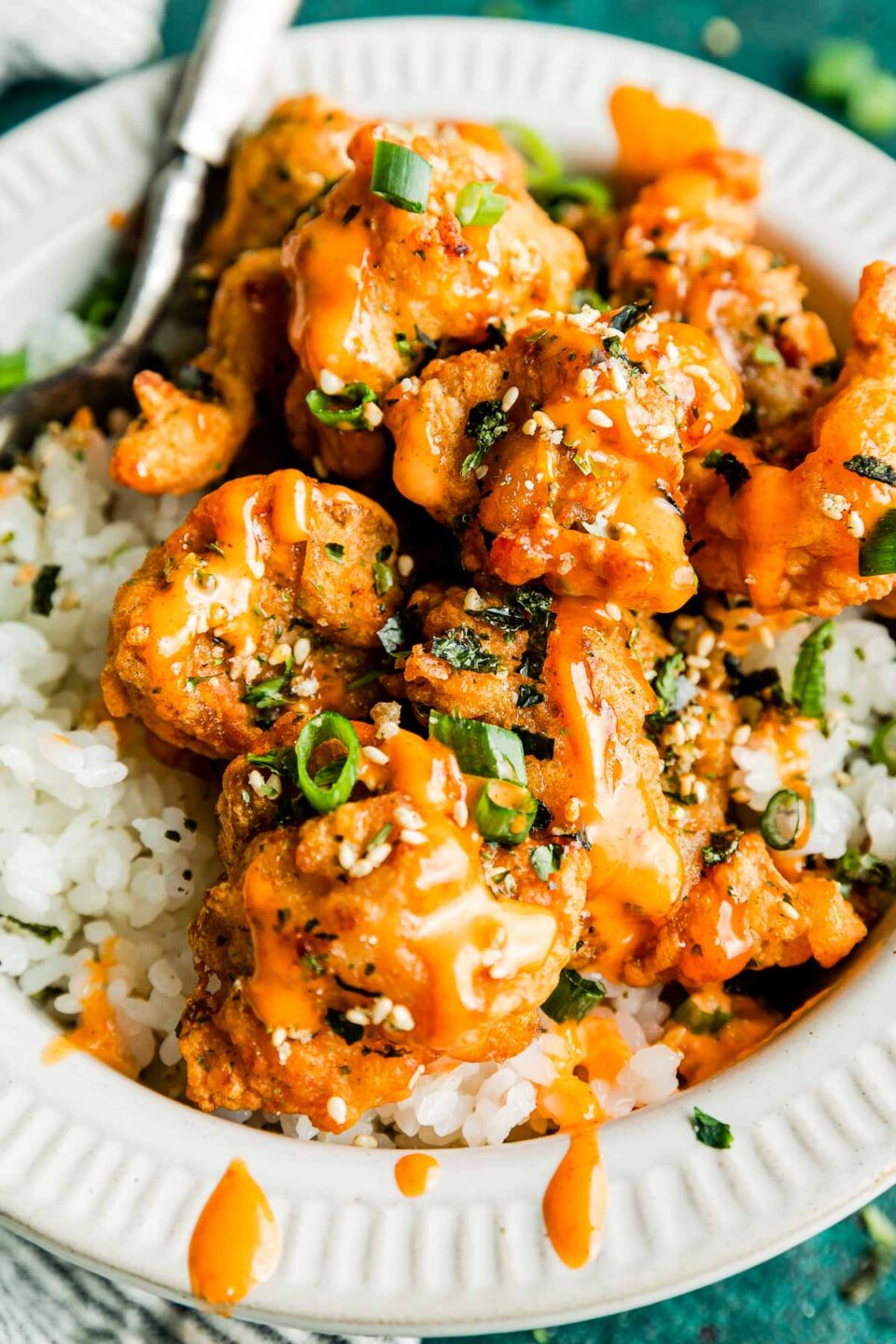
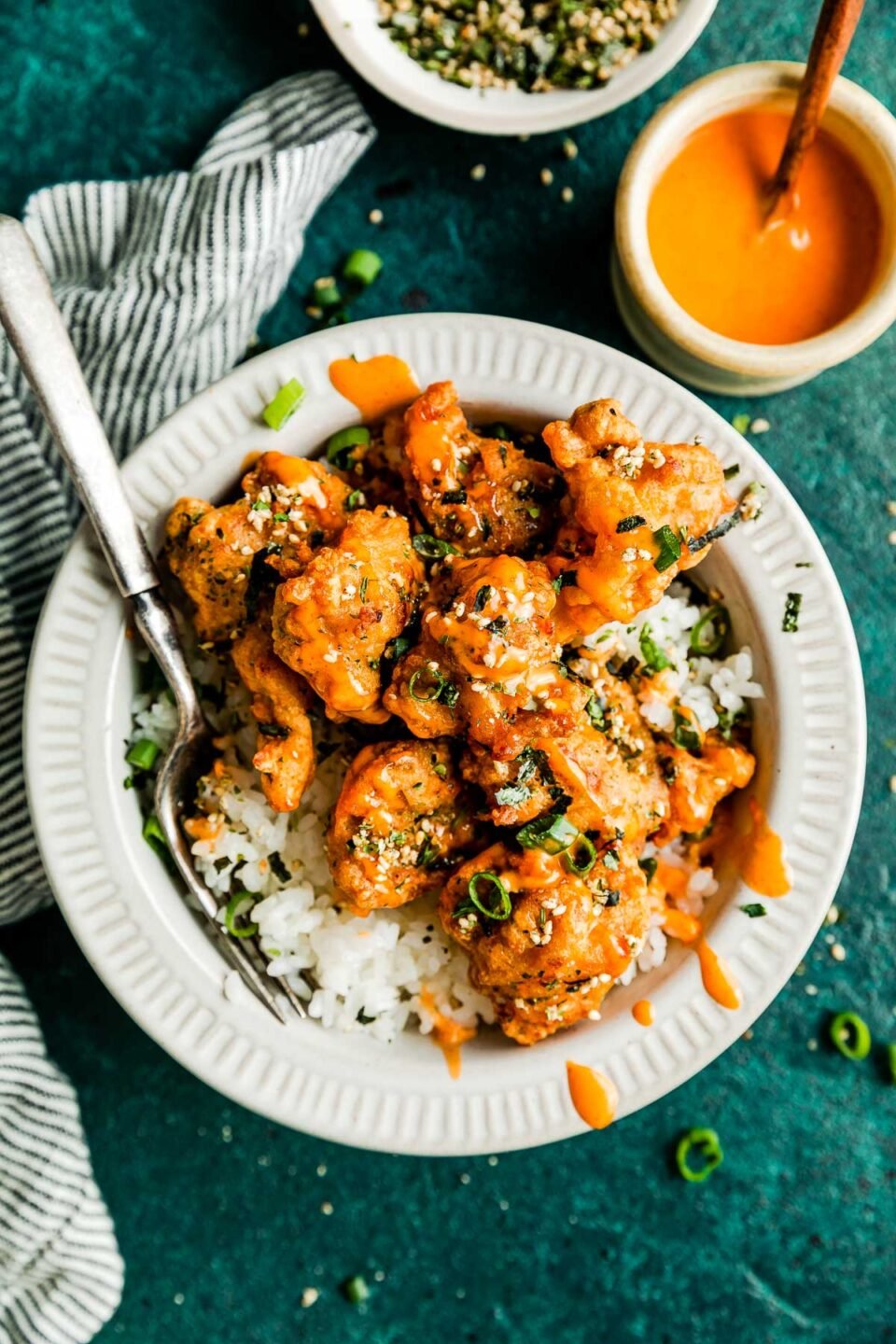
Follow along with Plays Well With Butter on Instagram, YouTube, Facebook, and Pinterest for more unfussy recipes that pack a big punch of flavor!


